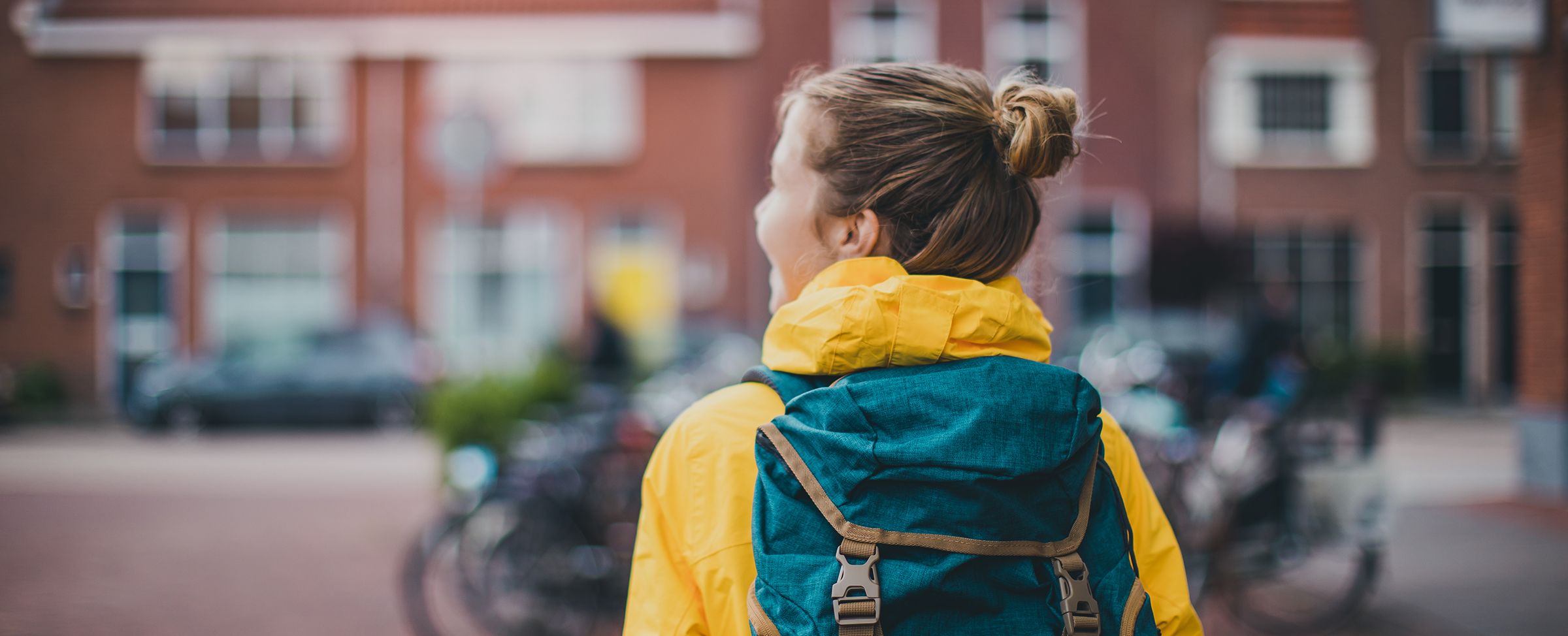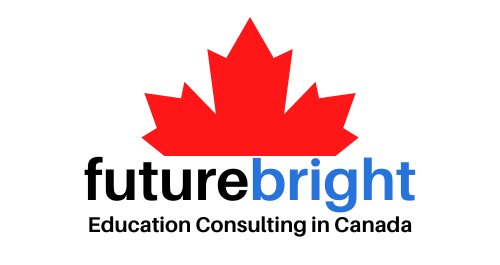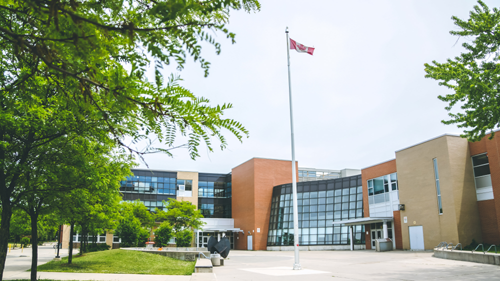One of the hardest decisions parents have to make is what type of school to send their child to: Private School vs. Public School in Canada.
When trying to decide between Private or Public Canadian Schools, one of the biggest deciding factors is often budget, but there are many other factors to consider, such as teaching quality, school environment, and educational opportunities.
There are pros and cons to both Private and Public Canadian Schools. It all depends on what your child needs and what your expectations are. For example, if you expect your child’s education to prepare them to apply for university, it really doesn’t matter what type of school they attend. Universities in Canada admit students based on marks and sometimes it’s harder to get high marks in some independent schools with more rigorous programs.
In Canada, parents often weigh the benefits of private schools, such as smaller class sizes and personalized education, against the broader accessibility and community-oriented nature of public schools.

Whether you’re already considering options like Upper Canada College vs. a public education, or you’re new to the school system and need guidance on the options, the objective is to ensure your child receives a high-quality education that aligns with their needs and aspirations.
Families also need to explore a variety of educational options, including co-educational schools vs. girls’ or boys’ schools, to find the best fit for their children. Ultimately, the choice between private schools and public high schools can have a profound impact on your child’s educational experience and future opportunities. Here’s a breakdown of each:
Pros and Cons of Public Schools in Canada
Public Canadian Schools – PROS
- Your child will attend school with children living in the neighbourhood, making it easier to make friends with classmates residing nearby. You will also meet local parents in your community.
- Your child may be exposed to a greater diversity of cultures and ethnicities than in some Canadian private schools.
- Canadian public schools are free for Canadian residents and citizens. For international students, public schools charge around $16,000-$18,000. This is much less than the tuition at many private independent schools, usually starting at $25,000-$35,000 to both local and international students.
- Canadian public schools tend to offer more accommodation options, and services for special education needs such as speech therapy, physical, occupational, and behaviour therapy to students who need it.
- Public schools in Canada have to deliver education options that meet the needs of all students as outlined in the Individuals with Disabilities Education Improvement Act (IDEA) of 2004.
- Canadian public schools also offer an Individualized Education Program (IEP).
- Public school teachers tend to have more experience and qualifications to serve special need students than those at private schools. Public school teachers must be certified.
Public Canadian Schools – CONS
- Public schools are governed by the provincial education ministries’ standard and they aim to educate all students to this level. However, students who are already above that level and are ahead of the curriculum (eg. early / fast readers) sometimes get bored or are not challenged. Even when they are challenged, some kids don’t put in as much effort. Private and independent Canadian schools with rigorous programmes offer more opportunity to keep kids engaged in different areas of interest.
- Overcrowding has become an issue in some public Canadian schools, especially in Toronto where schools were built for fewer students than the growing community around them. As class sizes increase, some students studies take place in portable classrooms far from the main building.
- Your child may not get the one-on-one attention he or she might need in large public school classes.
- Canadian public school teachers and workers have unions such as Elementary Teachers’ Federation of Ontario (ETFO) and Ontario Secondary School Teachers Federation of Ontario (OSSTF). the unions sometimes go on strike for days when they have disputes with the school boards.
- Some Canadian public schools experience increased discipline issues in certain neighborhoods. The school may be limited in its actions.
- The quality of Canadian public education differs significantly from one school to another – even in the same city. Parents need to choose housing according to the reputation of the school in the area.
- Public school budgets may limit access to quality learning materials.
- Public school students are required to take standardized tests, and teachers are pressured to spend a significant amount of time “teaching to the tests.”
- Although Canadian schools are bound by law to provide your child with an individualized education, you may have to be more proactive to get your child what he or she needs to thrive in the educational system.
- A public school might not accommodate when a child is absent due to illness, treatments, or therapy, to prevent falling behind. You may have to follow up closely for your child to receive the necessary services.
Pros and Cons of Private Canadian Schools:
Private Canadian Schools – PROS
- Private schools tend to have smaller class sizes, which can lead to more individualized attention for students. For example, the average class size at Upper Canada College in Toronto is 16 students.
- Private schools often have more specialized/enriched programs and extracurricular activities, such as those in the arts, sciences and athletics. Your child will experience more practical opportunities to explore and grow their skills and interests on and off the campus.
- Compared to public schools, most private schools have much more rigorous academic standards. This may be better suited for some students than others. For example, Branksome Hall in Toronto offers an International Baccalaureate (IB) program.
- Private schools can offer more personalized attention for students. For example, the York School in Toronto has a student-to-teacher ratio of 7:1.
- Private schools may have more resources available for your child, such as newer technology and better facilities. For example, the Havergal College in Toronto has a state-of-the-art science and technology center.
- If your child needs extra help or attention, private schools can offer them a more supportive and nurturing environment catering to their needs.
- Private schools can have a stronger focus on character development, moral education, independence, and real-world success.
Private Canadian Schools – CONS
- Private schools can be expensive. For both Canadian and international students, fees can be at least $25,000 to $35,000 per year depending on the school. For example, tuition at Upper Canada College in Toronto ranges from $36,500 to $63,500 per year. The costs can add up: application fees, transportation, supplies, and extracurricular activities. You have to make careful budgeting decisions.
- Because of their high standards, private day schools and boarding schools are much more selective; it can be difficult for some students to get in.
- Some private schools may not offer as many services for students with special needs as public schools with an IEP. For example, Upper Canada College in Toronto does not have a special education program. That said, the Applewood Academy for Progressive Learning in Belleville makes up for this with robust special needs programs and services, providing your child educational, psychological and emotional support that couldn’t be accessed elsewhere.
- Private schools may not be as well-regulated as public schools. They are not required to follow the same curriculum as public schools.
their What Are the Key Differences Between Private Schools and Public Schools in Canada?
The differences between private schools and public schools in Canada are significant, especially in funding and resources.
Public high schools rely on government funding through public-school districts, which can impact the quality of facilities and educational materials available. This often results in larger class sizes and a varied teacher-student ratio.
Private high schools, including private boarding schools and co-educational institutions, typically benefit from tuition fees and donations, allowing for more extensive resources, smaller class sizes, and specialized programs. The educational environment in private schools is more intimate. It often includes alternative approaches to education that focus on holistic learning.
Funding and Resources in Private vs Public Schools
Public schools in Canada receive funding from government sources. This creates an environment where education is accessible to all. Public funding covers various expenses, including salaries for public school teachers, school facilities, and resources for extracurricular activities.
Public schools are required to follow the standards of the province’s public education agency; for example, the Ontario Ministry of Education. That’s why traditional school programs are similar and consistent across public elementary schools, middle schools, and secondary schools throughout the province. However, public school spending can vary widely based on the local education budget. Your child will feel this in the quality of resources available.
Private schools depend on tuition fees and private donations for their funding, often resulting in greater resources for your student. This financial model allows for smaller class sizes and a range of specialized programs, including outdoor education and advanced academic offerings such as the globally-recognized International Baccalaureate (IB) and Advanced Placement (AP) curricula.
As an educational consulting firm, FutureBright Canada collaborates closely with many AP and International Baccalaureate boarding and private day schools.
Many private secondary schools also provide unique after-school programs and extracurricular activities that may not be available in public schools. Boarding and private day schools like Upper Canada College and the Bishop Strachan School offer a truly diverse curriculum that caters to various educational aspirations. From the elementary years to university preparatory school levels, these schools offer it all.
Class Size and TeacherStudent Ratios
Private schools in Canada have smaller class sizes than public schools. This creates a more personalized learning experience, which can greatly help your child’s development. Small classroom environments allow teachers to tailor their teaching style to your child.
Private school offers also typically include a higher teacher-student ratio, providing more one-on-one attention. This can be great for students pursuing advanced academic levels or specialized programs. It’s especially great if your child has his or her sights set for prestigious universities like the University of Toronto, and requires skills development for a more demanding career path. The hands-on knowledge they acquire at these private schools can eventually help their employment prospects in niche fields.
Public schools, on the other hand, serve a larger population, and hence lower teacher-student ratios. While this can make it harder to get a personalized education, it also creates a diverse academic community with a wide range of perspectives and backgrounds. Public-school teachers are trained to adapt to various classroom dynamics, ensuring that the province’s educational standards are met, and supporting the compulsory education framework in Ontario, where students progress through elementary education into secondary school programs while preparing for post-secondary education.
Curriculum Variations in Canadian Schools
Public schools must adhere to the provincial curriculum. They provide standardized educational pathways that prepare students for university or college (post-secondary schools). Public neighbourhood schools cater to local students while allowing for diverse educational experiences, including alternative schooling approaches such as home-schooling or specialized programs in inclusive schools.
On the other hand, private schools offer unique curricular enhancements, such as bilingual education (typically French and English language) or International Baccalaureate programs.
These private schools often attract international students seeking a world-class education. They provide globally-accepted ESL (English as a Second or Foreign Language) testing programs such as IELTS, TOEFL and DET. They also give you a choice between co-educational (mixed-sex education) or single-gender (boys’ or girls’) schools.
Many of the Canadian private schools we work with are CAIS accredited schools, which means they meet a national quality standard. This doesn’t necessarily mean the curriculum is the same across all of them like public schools! Your child will still enjoy a boutique school experience unique to that school. Ultimately, the goal is to select the best fit path forward for your child.
Specialized Programs in Private Schools
If your child is motivated and ambitious, they’re probably looking at a school type beyond the traditional educational system. Private schools in Canada often offer specialized programs that cater to diverse educational needs and aspirations. These programs can range from International Baccalaureate curricula to unique offerings in arts, sciences, and languages. A bilingual school may allow your child to become fluent in both English and French, while a co-ed school can create a collaborative environment that mirrors the real world.
Private schools often highlight their school campus facilities, offering extracurricular opportunities that enhance school life. With innovative programs at international schools and secondary boarding schools, students are equipped for their educational journey while benefiting from a safe school experience.
Accessibility and Admission Processes
Public and private schools in Canada each have very different standards of how many students are accepted.
Public schools in Canada have open enrollment policies that make education accessible to all students.
Private school admissions processes, however, can be more selective. Many private day schools and boarding schools emphasize specific academic or extracurricular focuses. In Toronto, a few private schools exemplify this approach, including the prestigious Upper Canada College and Lakefield College Schools. Applications fill up fast at these schools because of their selectiveness and the demand for their quality education programs.
Open Enrollment in Public Schools
The open enrollment process is designed for both domestic and foreign students. Schools provide a range of educational offerings, ensuring that their curricula meet the academic standards set by provincial regulations. As students transition through various education levels, the open enrollment approach helps parents who need closer home-school connections and direct participation in their child’s educational pursuits.
Admission Criteria in Private Schools
Private schools in Canada, including those in Toronto and other Ontario campuses, often employ specific admission criteria that set them apart from public education agencies. These criteria can include assessments of academic performance, interviews, and recommendations.
Many private academies seek to attract high school students who not only excel academically but also align with the school’s educational philosophy. For instance, a prestigious university-preparatory collegiate school may prioritize students with a strong commitment to academic excellence and leadership potential. Some institutions, such as girl-centred schools, may also emphasize character development alongside academic achievements, ensuring that students thrive in traditional school environments.
The admission process for private schools can be more selective compared to public schools, which accept all local students. This is why certain private institutions can offer specialized programs that target your child’s specific student development needs. For instance, an inspired school may provide a progressive curriculum. This approach can create a unique learning atmosphere, attracting secondary students from foreign countries.
Extracurricular Activities and Opportunities
Extracurricular activities enrich he educational experience in both private and public schools in Canada. Public schools tend to have sports teams and arts programs with the help of school funding. On the other hand, private academies frequently offer unique extracurricular options that can include specialized high school programs and international school offers, catering to the interests of domestic students and foreign students alike.
Unique Extracurricular Offerings in Private Schools
Schools such as the Trafalgar Castle School (a girls’ boarding school) often highlight music, literature and drama before the university year, engaging students far beyond the traditional classroom setting.
Canada’s private day and boarding schools offer advanced programs designed to enhance learning through practical engagement. These schools may also collaborate with international partners, providing students with unique opportunities to participate in global initiatives and exercise social responsibility. This extracurricular diversity enriches your child’s overall educational experience, creating a well-rounded approach to learning, and preparing them for the demands of adult society.
Private School vs. Public School Canada: Which Should I Send My Child To?
Ultimately, the decision of whether to send your child to a public Canadian school or a private school is a personal one. We offer a full range of Educational Consulting Services to help families find the best Canadian school for their children, whether it is a Public or Private Canadian School. Our student first approach starts with understanding your child’s unique profile including their educational background as well as your families needs and values. We craft a list of school recommendations specifically tailored for your child. Next, we schedule school visits and shortlist schools. We work with parents on the application process including interview preparation and private tutoring. Finally, we help you choose the school which is the best fit for your child.
Don’t get overwhelmed by the choices! Request a free consultation. We’d love to talk to you & your child about their education.


Recent Comments